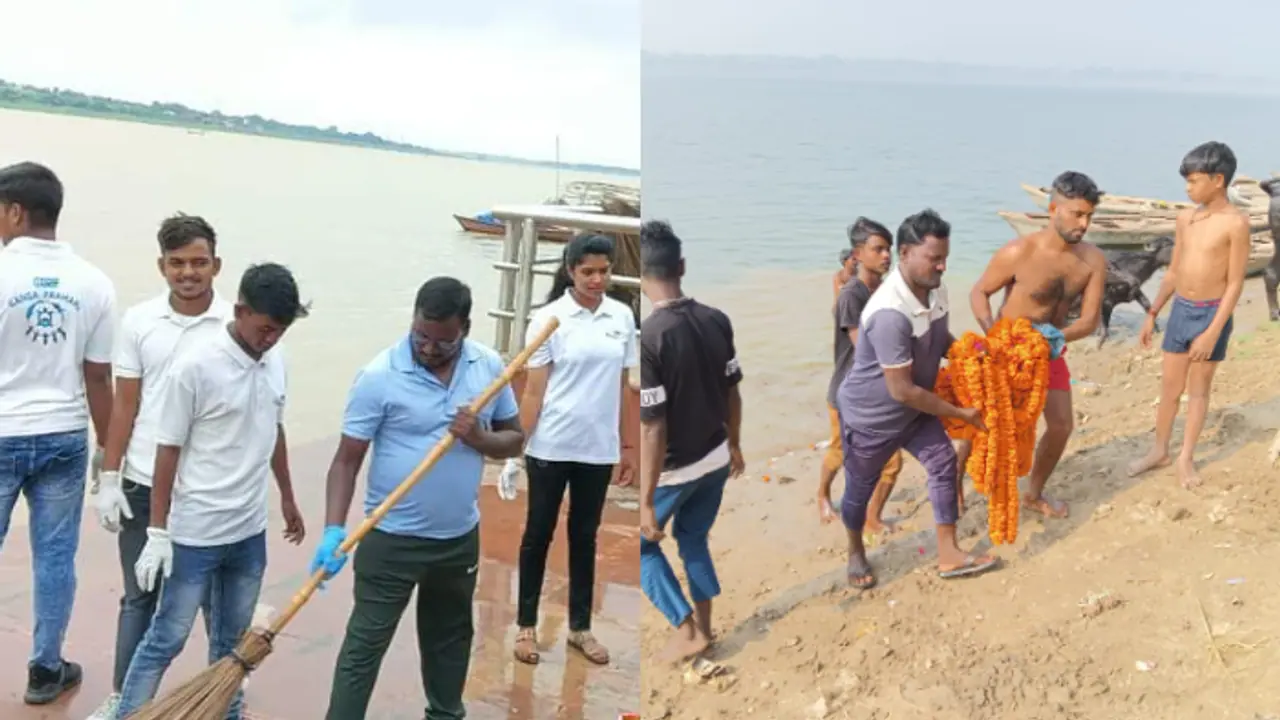As Mahakumbh 2025 nears, 500 Ganga Praharis work tirelessly to maintain the purity of these revered waters, supported by the Yogi government through training and employment initiatives.
The confluence of the Ganga and Yamuna in Prayagraj is not merely a meeting of two rivers but a sacred symbol of faith for millions of devotees who follow Sanatan Dharma. Each year, countless pilgrims from India and abroad uphold the Sanatan tradition by taking a holy dip in the clean and pure waters of this revered site. To preserve the sanctity of the Sangam, 500 dedicated Ganga Praharis are working round-the-clock to ensure the cleanliness and purity of these rivers.

As Mahakumbh 2025 approaches, with millions expected to take a holy dip in the Sangam, these Ganga Praharis will serve as vigilant custodians of river cleanliness. The Yogi government supports their efforts by providing training and linking them with employment opportunities, further motivating them in their mission.
Prayagraj is home to around 25 ghats, which will see an overwhelming influx of devotees during the Mahakumbh. Maintaining the cleanliness of these ghats, along with the Ganga and Yamuna rivers, is a significant challenge.
However, the Ganga Praharis stationed at each ghat are resolute in their commitment. Working in teams of 15-20 at each ghat and operating in shifts during the Mahakumbh, they are not only cleaning the rivers and ghats but also educating pilgrims on the importance of preserving river sanctity.
Additionally, over 200 specially trained Ganga Praharis from across the country are being deployed to ensure no manpower shortage in this monumental effort.
Under the Namami Gange project in Prayagraj, the 'Ganga Praharis' are dedicated to ensuring the cleanliness of rivers and ghats while conserving aquatic life, in collaboration with the Wildlife Institute.
Chandra Kumar Nishad, Assistant Coordinator of the Jalaj Yojana, highlights that millions take a holy dip in the Ganga and Yamuna rivers, and unclean water can diminish their faith.
He said, "To prevent this, the team conducts round-the-clock cleanliness drives, using nets to remove waste from the rivers and ghats. They also educate devotees to maintain cleanliness by refraining from throwing waste or flower garlands into the rivers. If garbage is discarded, it is promptly retrieved using Turan nets and other tools. "
Nishad credits the "double-engine" government for empowering local communities to take responsibility for river cleanliness and conservation. He added, "Former hunters of aquatic life, such as turtles and dolphins, are now their protectors, leading to a rise in the population of these species, which play a natural role in keeping the rivers clean."
Forest Department IT Head Alok Kumar Pandey praises the Yogi government’s efforts to provide alternative livelihoods to those previously dependent on aquatic life.
He added, "Through initiatives under the Arth Ganga Yojana (Jalaj Yojana), local women receive free training in skills like sewing, beauty services, and making incense sticks and jute bags. Over 700 women from 100–150 villages have already been linked to these training programs.
Meanwhile, men are assigned tasks beyond traditional diving roles and receive financial assistance and honorariums during the Mahakumbh. These initiatives have reduced the community’s reliance on the rivers, transforming them into active stewards of river protection."
Nishad also emphasized that the 'Ganga Praharis' are fully trained for the Mahakumbh. Beyond ensuring a clean event, they will assist pilgrims by guiding them to facilities, helping those who are lost, and directing them to the lost-and-found center.
Additionally, the team will work alongside security personnel to monitor the ghats, promptly responding to emergencies to ensure the safety and well-being of bathers.
